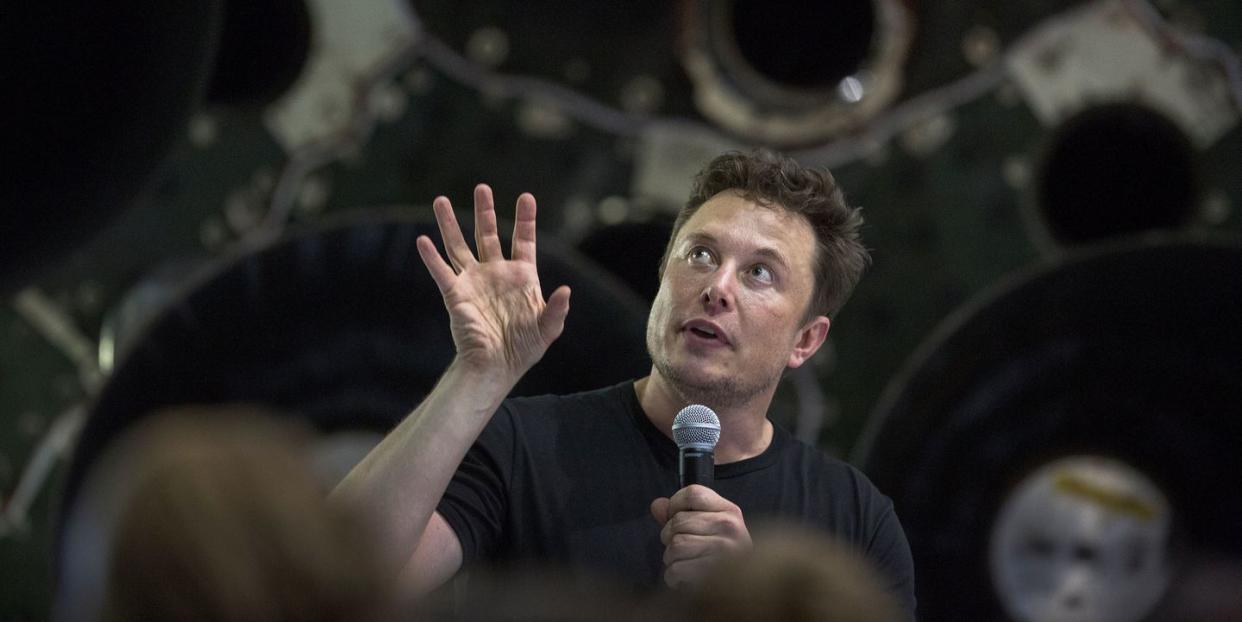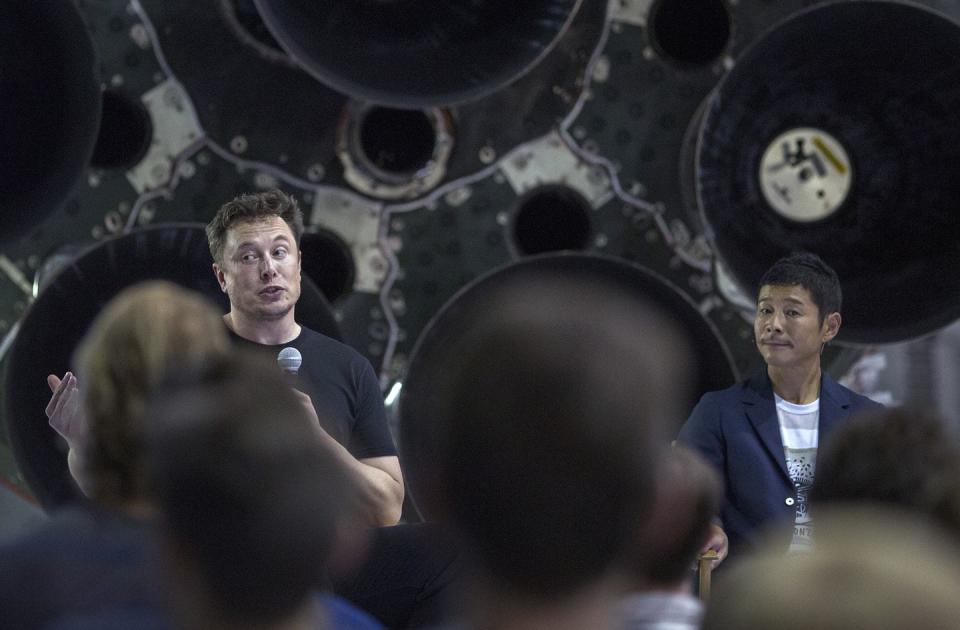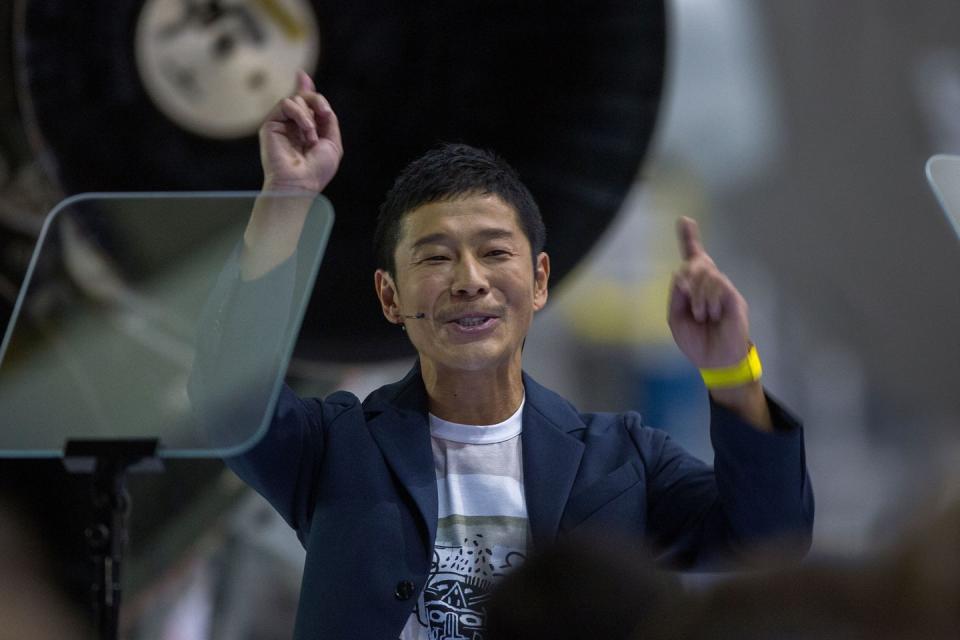5 Things We Learned From SpaceX's Moon Tourist Announcement

Last night SpaceX announced the identity of the first private passenger it intends to shoot into space: Japanese billionaire Yusaku Maezawa. The passenger came on stage and announced he will fund a trip around the moon and will take six others with him as part of a global art project. “I choose to go to the moon,” Maezawa said during the announcement. “With artists!”
Amid the hoopla and excitement, it could be easy to forget some of the important aspects of the mission and what it means for the future of the space economy. Here are some things to keep an eye on as this mission progresses toward its planned 2023 launch.
Stunt or Legit Mission-Is There a Difference Anymore?

The aerospace industry is no stranger to a publicity stunt. Did you know the first transcontinental flight across the U.S. was part of a $50,000 contest? The winner, Calbraith Perry, named the airplane he flew after a grape-flavored soft drink in exchange for sponsorship.
An aviation stunt is worthwhile if it leads to a breakthrough or advancement. The X Prize is a good, modern example of this. But what SpaceX is doing does not qualify as a stunt. That distinction is fading, which is a sign the space industry is coming of age.
This is a paying mission. The whole point of the private space movement is that anyone could pay for a ticket for any reason. The old idea that space is reserved for stern-faced scientists and military pilots-and any other flight is silly-is an archaic, vanishing distinction.
You may disagree with Maezawa’s project or criticize it as the indulgent dream of a billionaire. But it’s as legitimate of a mission as launching a communications satellite. In this business, like many others, the customer is always right. Just be lucky that Coca-Cola isn’t paying for rides to put its logo on the lunar surface.
Yet.
Safety Not Guaranteed

“This is a dangerous mission,” Elon Musk told the crowd last night, repeatedly. It wasn’t just a way to amp up the drama of the announcement. The statement highlights the risk of sending a half-dozen people on a new spacecraft and rocket to a far-flung destination where there is no chance of getting help.
“He is, I think, the bravest person and the most willing to do so,” Musk said of Maezawa.
SpaceX doesn’t highlight the risk when it talks about flying NASA astronauts to the International Space Station. Instead, the safety lessons of safety that come out of that program will apply to this moonshot. Leveraging one program’s lessons to advance another is classic SpaceX strategy.
Still, the mission is perilous and Musk is right to point that out. The flight route, zipping past the moon as closely as possible and turning around to do it again, requires many thruster burns at precise times. Miss a calculation and the consequences could extend the time of a flight, maroon the passengers in space, or send them toward an impact with the lunar surface.
Musk mentioned flying fewer people to ensure that the spacecraft has plenty of supplies in the event of an emergency. Having a crew trapped in space after a mishap would give the term “starving artist” a whole new meaning.
Uncle Sam May See the Trip as a Distraction
SpaceX launches lots of commercial satellites, but the U.S. government is a core customer. In addition to delivering cargo and crew to the ISS for Uncle Sam, the company launches national security sats as well.
Musk kept saying NASA and “nat-sec” launches come first. No spaceflight customer ever wants to feel that they are a secondary priority, and a new high-profile pet project may not be a welcome distraction. This is what drove Musk’s repeated comments that the real focus on the Big Falcon Rocket (BFR) would come only after the crewed flights have been achieved for NASA. He said the moonshot will be less than 5 percent of Spacex's effort until the other stuff is done.
- Elon Musk (@elonmusk) September 17, 2018
During the conference, Musk (perhaps accidentally) dropped news of a crewed capsule delay that would push the crewed flight from its expected April 2019 launch to sometime in the second quarter of that year. With that kind of timetable slippage, NASA may need some reassurance.
Since the BFR mission heavily leans on the work done for NASA’s crewed flights, any further delays to that program means a delay in Maezawa’s moonshot. When Musk was asked what makes him sure SpaceX can meet the 2023 schedule he replied, “We’re definitely not sure.”
Will This Mission Be One of Many?
By the time Maezawa flies to the moon, the state of human spaceflight may make this flight look like less of an anomaly. There are many ideas floating around the world to explore the Moon and Mars, of space hotels over Earth and a crewed space station in lunar orbit. The Chinese government has lunar aspirations. Other companies, most notably Blue Origin, are designing hardware to bring people to the lunar surface.
Many of these will be delayed, cancelled, or otherwise fizzle. But not all of them will. It could be that, by the time this rocket launches with its cargo of artists, that it will have company.
The morning after the SpaceX announcement, Japanese Space Agency officials presented a slide showing their ambitions to help explore the moon’s surface, using U.S. and Russian rockets and utilizing the proposed Lunar Gateway space station.
Masami Onoda of JAXA presents this chart outlining the agency’s long-term vision of space exploration in the vicinity of the moon. #AIAASpace pic.twitter.com/oCXXVoruUT
- Jeff Foust (@jeff_foust) September 18, 2018
Slides like this one exist many places, from government ministries to private space companies. What seems like an extreme mission today may be commonplace in the future.
Will Musk Go?
Musk has maintained from SpaceX’s beginnings that he aspires to set foot on Mars. In some ways, the SpaceX business model is built on that premise. So it’s not too surprising that, during the announcement of Maezawa’s trip, he said, “All right, maybe we’ll both be on it."
Maezawa seemed open to the idea, nodding and clapping. But others may not be so happy to hear the CEO of Tesla and SpaceX is now fixated on going to the Moon. While SpaceX is doing well, his car company is under fire, not helped by Musk’s recent track record of self-inflicted public relations wounds.
Still, the idea that the head of a launch company would board a thoroughly tested (but still new) spacecraft on its maiden voyage is pretty cool. It would mean, as Musk said of Maezawa, that the tech guru is “putting his money where his mouth is” by sharing the risk.
('You Might Also Like',)

